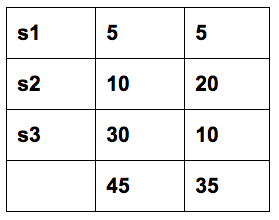The Importance of Metrics
Let’s start by asking a simple question: Why is measuring important in Quality Assurance? By measuring our actions, we are able to know how we are doing on our tasks, how long they are taking, and how much they are costing. This information can be used to improve our processes and the quality of our work. Plus, we can apply these metrics and techniques to our activities to get important information, which we can use to make better decisions.
These decisions lead us to actions. Real improvement depends on the metrics and is why we choose ones that help judge productivity and efficiency.
“If something cannot be measured, it cannot be managed”.
Best Practices and Metrics
Best practices must always be included in the tasks of a good QA team, which include continuous learning, improving processes, giving insights into test progress, maximizing productivity, and improving quality.
Some common questions that a QA team has to deal with are: How long will it take to test? How much software was tested? How good were the tests? In order to answer these questions, a good measurement is needed. By using metrics, a QA team can track their own progress and analyze if the goals are met and if all the resources are being used to their maximum capacity.
In today’s world, it’s not enough to just execute test cases. It’s necessary to communicate progress throughout the software development lifecycle and pay attention to the metrics used for making executive decisions.
The metrics provide guidance about time, cost, and resources. They are also used for team decision making, evaluating the strengths, weakness and capabilities of each team member, and motivating the QA team to maximize productivity. Additionally, metrics help us understand problems with the process and customer expectations.
Metrics and Objectives
Every metric has an objective or goal and something that will be measured. For instance, the two metrics below explain their objectives clearly:
- Metric One: “Number of defects found on a specific build” - Measures the stability of builds or compares various builds. If number of defects decreases, it means build is becoming stable.
- Metric Two: “Time to execute regression test cases”- Measures testing efficiency. The first time should be higher than all the following tests.
Metric Purpose
Number of Defects
The total number of defects found in a given build that resulted in software or documentation modifications. Only accepted defects that resulted in modifying the software or the documentation are counted.
Time to execute regression test cases
Effort required to execute test cases on a regression cycle.
Interpreting Metrics
Once the metrics are chose, the team needs to interpret them so they can be managed correctly and carefully, since big data is a big responsibility. Always make sure that you get some value from whatever measurement you are using. Metrics are helpful tools, though they can be used positively or negatively, to tell you the story you want to hear. The interpretation gives the information, the information gives the knowledge, and the knowledge is essential to make the right decisions.
Number of defects found – let’s consider a team that has executed two cycles of testing and the number of defects logged in each of these cycles is displayed below:
Number of defects Defect Severity Cycle 1 Cycle 2

Conclusion
To summarize, metrics are the secret ingredient for a successful QA process. It tracks progress versus actual progress, costs (money spent), defects, test cases, man-hours, etc. QA metrics definitely help us understand the processes and the test reporting. Visibility also shows the quality of the software product. It is effective at managing the software development process.
